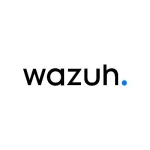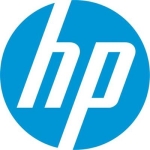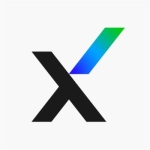What is our primary use case?
We use it for our endpoint detection and response on our devices for both endpoints and servers. It has replaced our traditional antivirus. We are strictly using it now to do all our antivirus duties.
We are primarily a Windows environment, 95 percent Windows. Then, we have a little bit of Linux and Macs in there as well.
How has it helped my organization?
They have been able to help us. We have used other functions, such as Discover, to identify software that is running in our environment. This is not necessarily bad software, but it gives us an idea of what is out there to start building a standard configuration, which helps us build policies for what we do want in our environment and what we don't. That has been very valuable as well. It is kind of an offset of what they actually do; their main bread and butter, if you will. They have been very helpful with other tasks, such as that and in finding themes.
We are pretty confident in CrowdStrike. Knock on wood, we haven't had any breaches that we know about. When you do see a large breach in the news, it seems like CrowdStrike is always mentioned. They are either helping investigate or leading the incident response (IR) process for them. While I can't really say it has specifically stopped a data breach for us, we are confident that if something happened then CrowdStrike would catch it.
What is most valuable?
We primarily use the Falcon feature. It is very dependable for us. We have done multiple tests against it and thrown everything we could at it. It does seem to pick up quite a bit, if not everything, that we have tested with it. So, we rely heavily on it. Right out-of-the-box, the main Falcon component is the biggest feature that we utilize and rely on.
We are a heavy laptop environment. So, it was nice to know that our users would be protected and we would know what was going on, on the endpoint, regardless of how they were connected. That has been very valuable. This is one of the reasons why we chose to go with this solution.
The fact that this is a cloud-native solution means that we don’t need to worry about updates. They take care of all the back-end and architecture. The only updates that we need to worry about are the sensors themselves. If you set them to auto update, like we do, then you don't even have to worry about that. It definitely frees us up to do more important things. If it wasn't for them doing this, we would need at least a part-time FTE, if not a full-time, to operate and manage CrowdStrike keeping it up-to-date as well as the hygiene. We had half of an FTE assigned to our antivirus prior to CrowdStrike. Now, that is just included in our dailies. It lessens that burden so much that we don't even need a slotted requirement for that. Overall, this solution saves us at least a good 10 hours a week that we would have been using before.
Their threat dashboards are very helpful. For instance, with this zero-day that just came out from Microsoft, they already have a dashboard where you can see the assets in your environment affected or at risk. That is just an added value.
What needs improvement?
It would be nice if they did have some sort of Active Directory tie-in, whether that be Azure or on-prem. Sometimes, it is difficult for us to determine if we are missing any endpoints or servers in CrowdStrike. We honestly don't have a great inventory, but it would be nice if CrowdStrike had a way to say this is everything in your environment, Active Directory-wise, and this is what doesn't have sensors. They try to do that now with a function that they have built-in, but I have been unsuccessful in having it help us identify what needs a sensor. So, better visibility of what doesn't have a sensor in our environment would be helpful.
For how long have I used the solution?
We have been using it for four years.
What do I think about the stability of the solution?
Stability has been really good. We have not seen the issues that we had with traditional AV. Having it connected to the cloud has really helped with stability, being able to see what a computer is doing at all times, and being able to see the last check-in times, this has kind of helped with the sensors.
It is primarily just me for tweaking or management of the solution. I have backups, if needed, but it is such a light lift that I may spend an hour or two a week in the console. It really is a great product that takes care of itself. Not a lot of tweaking has been needed so far, knock on wood. We haven't really had to make any exclusions like we used to with traditional AV. Everything is running with CrowdStrike's full protection, which is a huge bonus for us, since traditionally you are pretty blind.
What do I think about the scalability of the solution?
The solution is very scalable and easy to deploy as well as sync up agents with it.
The end users are the security team, which consists of about four of us. Then, we have a couple of leads from other technical teams. So, there are probably eight users who have access to CrowdStrike. Primarily, there are just three of us who are in there constantly.
How are customer service and technical support?
The technical support has been pretty good. They are usually very responsive. We haven't had to escalate anything. When we have needed a more technical, deep dive, we have been able to get a dedicated engineer for our account to assist us. So, there has never been a time where we feel like we can't get the help that we need.
Which solution did I use previously and why did I switch?
We were previously using McAfee.
CrowdStrike seems to detect quite a bit more than McAfee did. We like how it is kind of real-time, if you will. It is not so much signature-based. So, it has been able to stop things quicker than McAfee did. We have seen a huge increase in performance on our systems. Oftentimes, the daily scans would need to be run with signature-based AV or scans with servers, then that would cause great performance hits. It kind of limited us as well to where we could only scan certain windows. Now that we have CrowdStrike, we are kind of always-on and not limited to having to do those scans. So, that has been a big performance increase for us.
It is a lot easier to use CrowdStrike than McAfee, especially having the team at CrowdStrike handle the maintenance day-to-day, etc. With on-prem, you are responsible for everything. Whereas, with CrowdStrike, we can just worry about our IR response, basic deployment, and health checks. So, it is very convenient having them handle it in the cloud.
CrowdStrike was cutting edge technology at the time. EDR was still kind of new then versus the traditional AV. Not only because of licensing costs, but also because of performance, we felt that we needed something new.
How was the initial setup?
It is easy to deploy the solution’s sensor to our endpoints. We have that as part of our build process. When new things are built, we have those as part of the build. If for some reason, something gets corrupted, then it is fairly simple to redeploy and we utilize SCCM for that. However, it is pretty run of the mill, i.e., easy. With the updates being taken care of by CrowdStrike, once it is deployed, then you are pretty much good to go.
Our initial deployment took about a week. That was only due to working out how to adjust CrowdStrike in our environment: weed out false positives, mimic anything that we needed to from our traditional AV over to CrowdStrike, and test previous exclusions that we had for our traditional AV, if we needed those anymore in CyberArk. It was very easy to deploy with SCCM, then it was more just tweaking.
We did a test in our test environment and saw no negative impacts. Although not advised by CrowdStrike, we were able to run our traditional AV while we were deploying CrowdStrike. Once we knew CrowdStrike was on the machine working, then we were able to send out scripts to remove the old, traditional AV. Our strategy: We knew that it would not, at least in our environment, hurt us to have both on temporarily. So, our deployment strategy was very simple, knowing that we had an AV in place to back us up if something didn't go right with the CrowdStrike install.
What about the implementation team?
I did the deployment. If there were exclusions or something that we needed to address, then I worked with the individual teams.
What was our ROI?
The 10 hours a week that we are freeing up from having to manage and monitor our AV solution has really allowed us to focus on other areas of the business. This has been a huge return on investment.
What's my experience with pricing, setup cost, and licensing?
We did the free trial to kick the tires. Part of that head trial was having us load stuff and trying to get by it, and we weren't. That trial really helped sell us that it was a good product.
Getting the free trial was very easy. It has been years now, but it was as simple as just going to the website and requesting a free trial, then it was stood up maybe even that same day. It is hard to remember now, but it was very quick.
The pricing and licensing are fairly good. It is definitely not a cheap product, but I have felt that it is worth the money that we spent. So, we have discussed it in the past, and were like, "Yes, it is probably pricier than some other solutions, but we also feel they really are the leader. We are very comfortable with their level of expertise. So, it's kind of worth the price that we pay."
We do add their OverWatch protection, which is an extra bit of an add-on, but that gives us 24/7 SOC-type watching. So, we have added that on, which has been valuable as well. Outside of that, there have been no more additional costs.
Which other solutions did I evaluate?
We were looking for an EDR solution. At the time, CrowdStrike was the leader. We were very big into Gartner reviews, and we went off of Gartner. We just wanted the best that was out there.
What other advice do I have?
Do it. It is a great product. I seriously think it is worth considering. We have been completely happy with the solution that we have been running on for years now and have never regretted our decision. I highly recommend it.
We plan on possibly looking into the added features that they offer to see if there is something there that can increase our incident response or add value to our business.
It is our primary EDR, so we are using it 100 percent for that and plan on using it for other avenues. We found Discover can help us with the inventory for applications. So, I am looking for other business opportunities there to help us, which will be our goal in the future.
It has given us some insight into how threat actors work. The biggest thing for us has been threat actor education. They give you intel which helps you identify what attackers you would more likely be targeted by. A lot of this comes with our OverWatch protection. Their threat intel has probably been the biggest thing for us.
Overall, I hate to give a perfect score, but it is probably a 10 out of 10. It is a really great product.
Disclosure: PeerSpot contacted the reviewer to collect the review and to validate authenticity. The reviewer was referred by the vendor, but the review is not subject to editing or approval by the vendor.

















